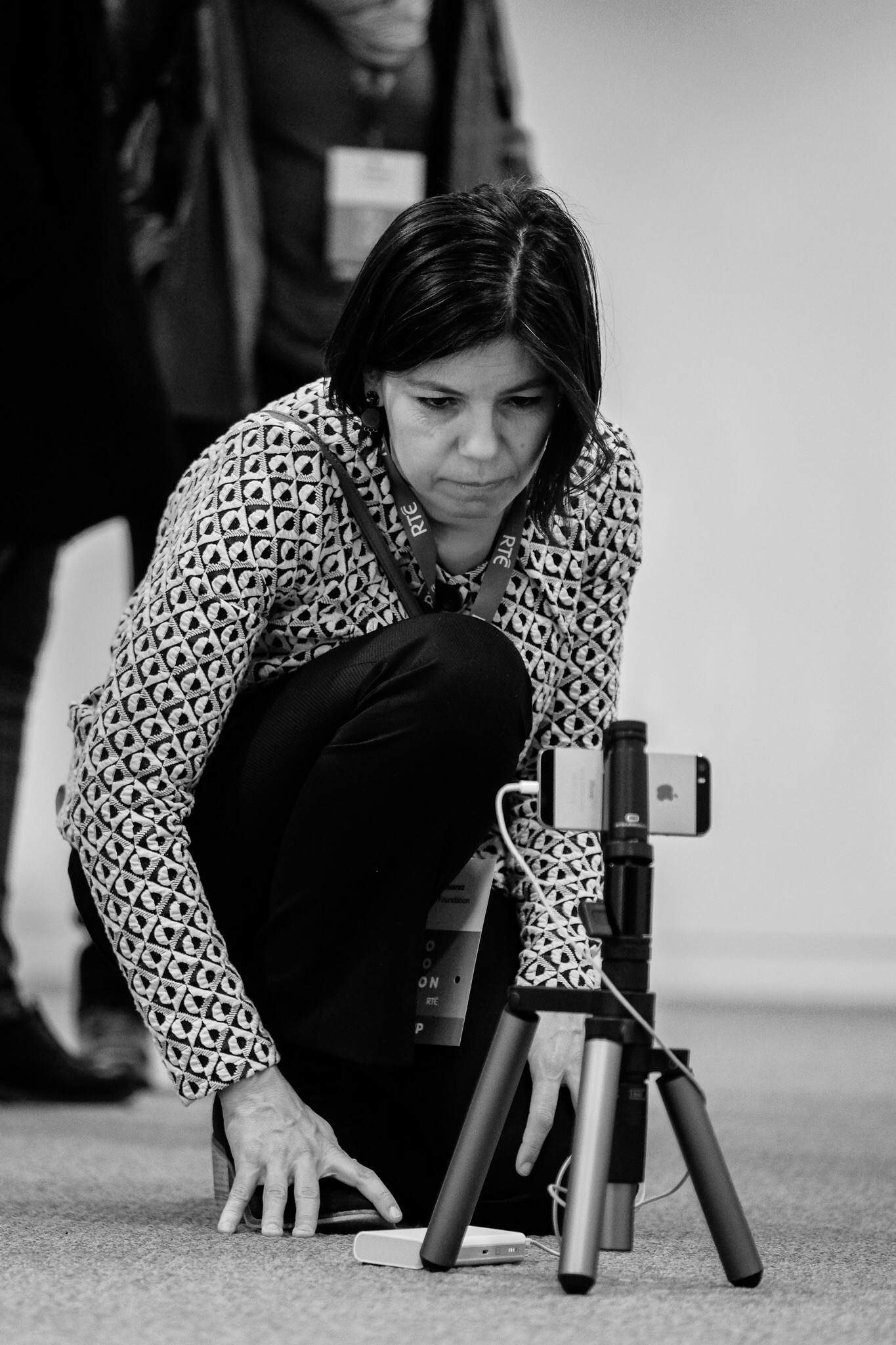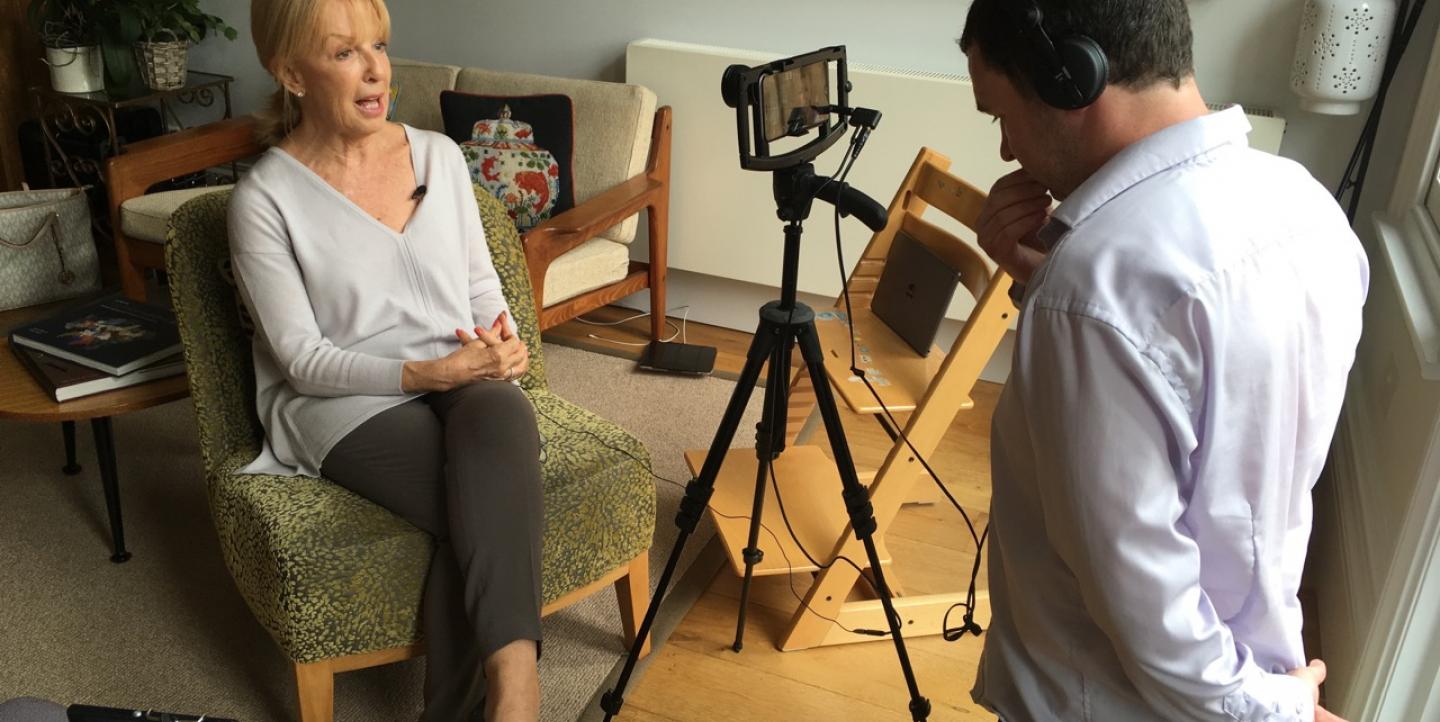Across the world, mobile journalists are telling riveting stories with little more than a smartphone in hand. This five-part series will examine how we define mobile journalism, how traditional newsrooms are adapting, citizen contributions, how mobile is improving journalism and disruption in mobile journalism.
Mobiles have proved to be useful tools for reporters for years, but some media executives have trouble seeing all the opportunities they offer. Most newsrooms limit their use and understanding of mobile reporting to breaking news coverage and eyewitness content. Some journalists and media organizations use their mobiles to give a behind-the-scenes glimpse at newsmaking and other exclusive snippets. But it is only secondary to their journalistic projects.
With many newsrooms still lagging to see mobile’s potential, going mojo in a traditional broadcast or print newsroom has been complicated.
“We're still going through an evolution process that I think ultimately will change the way that news is both made and distributed — but it's a slow process,” notes Glen Mulcahy, founder of the Mojocon mobile journalism conference and head of innovation at RTE, an Irish broadcaster.
The mobile journalism trainer is familiar with this type of “knee-jerk reaction” in broadcast when new technologies become available for journalists.
“Big broadcast institutions tend to be very precious about the big broadcast infrastructure,” he says. “When something disruptive comes along, people tend to try to kill it as fast as possible rather than stepping back and seeing the potential.”
Mobile journalism trainer Stephen Quinn saw it when he visited a media company in Shanghai. Media executives were excited about mobile journalism’s potential but not interested in training their staff because they had just invested massively into three new camera studios. They worried about what their accountants would say.
Mobile journalism practices have not been adopted at the same pace in different organizations. The BBC is one such example. Dougal Shaw, a BBC video journalist, found his editors were slightly surprised and skeptical about him using the technology. Now, the BBC is investing in its journalists and offering many courses to get them to use their mobiles.
Several journalists have filed a story produced with a mobile without telling their editors. Björn Staschen, head of NextNewsLab at German broadcaster NDR, shot a story following the Brexit vote with his mobile phone in Scotland and didn’t tell his editors back in Germany. “I just did it, and then sent it to them, and they didn’t notice,” he says.

“When I told [my colleagues] I was going to shoot with a mobile, they thought the quality would be the same as the sort of eyewitness videos we get for breaking news, this sort of shaky footage,” says Leonor Suárez, a news editor at Spanish TV station TPA.
According to several mojos, audiences don’t seem to notice a change in quality. Even some editors don’t see a difference.
However, the perception that there is no difference between footage shot with traditional cameras and mobiles is a complicated issue. Many cameramen see mobile journalism as a threat to their jobs. In Germany, Staschen’s newsroom approached this contentious situation by creating a news lab where people from both technical and journalism teams collaborate.
“It’s not about having less people doing our work, it’s about doing it differently, telling different stories, and producing content for TV, radio and online,” he explains. “It is stupid to say that in 10 years from now we’ll only work with mobile phones in newsrooms. I don’t believe it will [be the case].”
In Switzerland, however, one newsroom has clearly embraced mobile journalism. Léman Bleu now produces 80 percent of its videos with iPhones after producing an entire news show with iPhones in summer 2015.
According to Laurent Keller, Léman Bleu editor-in-chief, the organization started the experiment to cut down on heavy equipment, but eventually found unexpected advantages like increased interactivity, proximity and reactivity in case of breaking news. This strategy has allowed reporters to make local journalism that’s more personal, sensitive and close to reality, Keller said.
Until now, mostly local and regional broadcasters have trained mobile journalists. Online media organizations have been more agile and implemented mobile journalism strategies early on such as Al Jazeera, which started AJ+ and also uses mojo in its own broadcast operations.

“I have had the loosest possible leash,” he says. “I was working with Nic Dawes, who hired me. His whole model was for at least the first months or two, just run wild. Do whatever you want. Build formats.”
Omar says he is now proud of having no journalists on his team.
“I believe if you build a mobile journalism culture properly, you integrate it into absolutely everybody in the company from the security guard to your editor-in-chief with the basic skills to do mobile journalism storytelling,” he says.
His creative experiment is still an exception for now but Quinn is not surprised. “Digital advocates always say [diffusion of innovation] will be happening soon. It always takes longer,” says the mojo trainer who studied that topic.
Nicolas Becquet’s opinion piece about the lack of good mobile journalism, written in the aftermath of the November 2015 Paris attacks, was revealing. The journalist at Belgian media outlet L’Echo was disappointed by Francophone media coverage of the attacks.
“As I was following the events live, thanks to several Periscope streams, I was shocked not to see any journalists,” he says. The day after the attacks, he started following live streams from a model-turned-fashion blogger who was filming from her balcony. “I thought there was an article to be written about the absence of media organizations on this distribution channel.”
He thinks many media organizations are struggling to integrate mobiles in their newsrooms’ workflows.
“There is a big contrast between the ease of use of a smartphone and the complexity to integrate its method in a media organization,” he says.
Philippe Couve, a French journalist and mojo trainer, agrees.
“We can’t expect a general adoption of things that are pretty much still prototypes,” he says of mobiles’ technical limitations and bugs in applications.
The implementation of mobile journalism in media organizations, especially those more traditional, is proving a challenge. However, as the technology is perfecting itself and becoming more reliable, the industry is starting to realize its potential impact.
Main image courtesy of Dougal Shaw [pictured, right]. Secondary image of Leonor Suárez courtesy of Sir Cam. Third image courtesy of Yusuf Omar [pictured].

